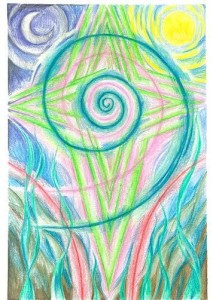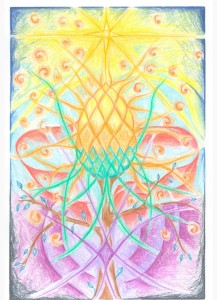Dear Integral Meditators,
Meditation and mindfulness are about developing flow-states. The article below shows you how you can build your basic flow state from the ground up into a stable, diverse and enjoyable mindfulness practice.
In the spirit of flow,
Toby

The Warrior and the Lover – Establishing Your Basic Mindful Flow State
Effective meditation and mindfulness depends upon developing your capacity to connect to and sustain flow states. Flow states consist of two basic factors; focus and relaxation, or concentration and relaxation. Whatever you are trying to meditate upon or be mindful of, you are trying to do so with a quality of attention that flows in a state of consistent focused relaxation for the duration of your mindful activity.
How to create a basic flow state
Sit down and repeat this basic pattern a few times; firstly for 3-5 breaths try and focus as single pointedly as possible on your breathing without distraction. Then spend a short while simply relaxing your body, mind and heart as deeply as you can.
Once you have followed this cycle a few times, continue the same basic pattern but now :
- As you are focusing intensely on the breathing, try and make the quality of you focus relaxed as well as intense
- When you are in the relaxation phase, try and make the quality of your relaxation focused and present as well as leisurely
In this way you start to bring together the qualities of focus and relaxation into a single experience or flow state.
Once you are comfortable with this second stage, you can simply practice focusing on the breathing in a state of relaxed concentration, practising this basic flow state. It should feel comfortable and relaxing whilst at the same time sharpening your mind and senses.
Doing this three stage exercise for a few minutes each day will give you the basic skills, as well as being a fundamentally pleasant, stress releasing experience.
Applying your flow state to other areas of your life
Once you have a feeling for your basic mindful flow state, you can then start applying it to different areas of your life; when you are engaged in your work, listening to/talking with a friend, thinking about something that is important to you, playing a sport, making love, engaging a challenging emotion and so on…If you practice like this then you can start to make more and more of your life an experience of playful mindful exploration.
The Warrior and the Lover – Bringing your flow state alive
To give a bit of colour to your flow state, you might like to imagine the focus aspect of your flow state is like your inner warrior; disciplined, intense, strong, and always ready. Therelaxation aspect of your flow state is like your inner lover; bringing the qualities of sensuality, curiosity, and engagement to the experience. Together these two make your basic flow state an experience of engaged detachment, or playful seriousness.
© Toby Ouvry 2015, you are welcome to use or share this article, but please cite Toby as the source and include reference to his website www.tobyouvry.com
Integral Meditation Asia




